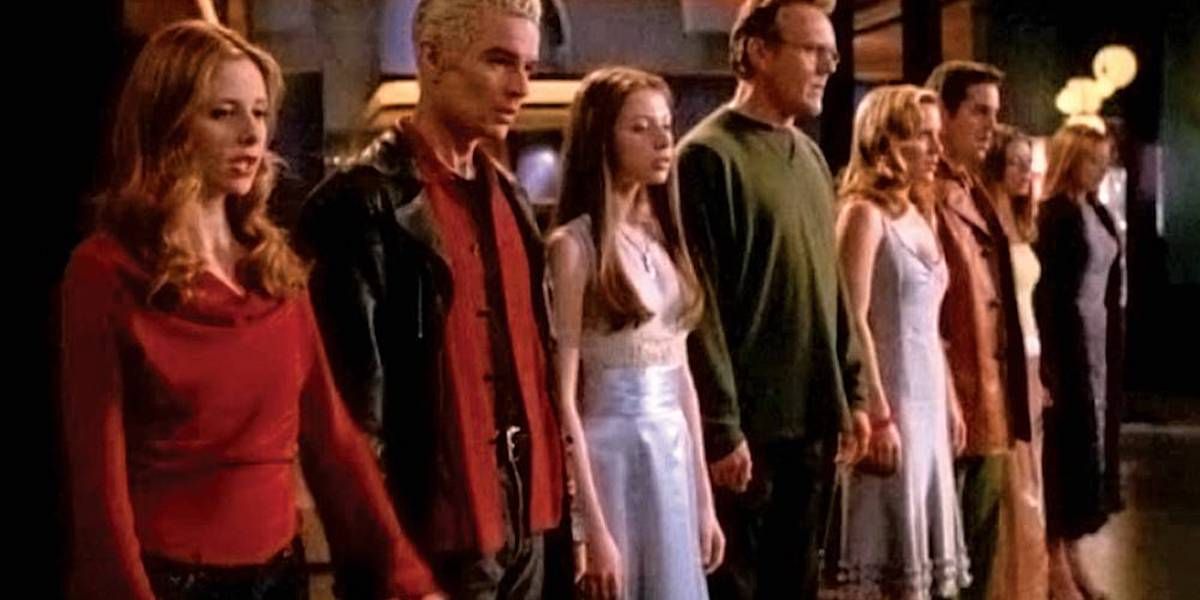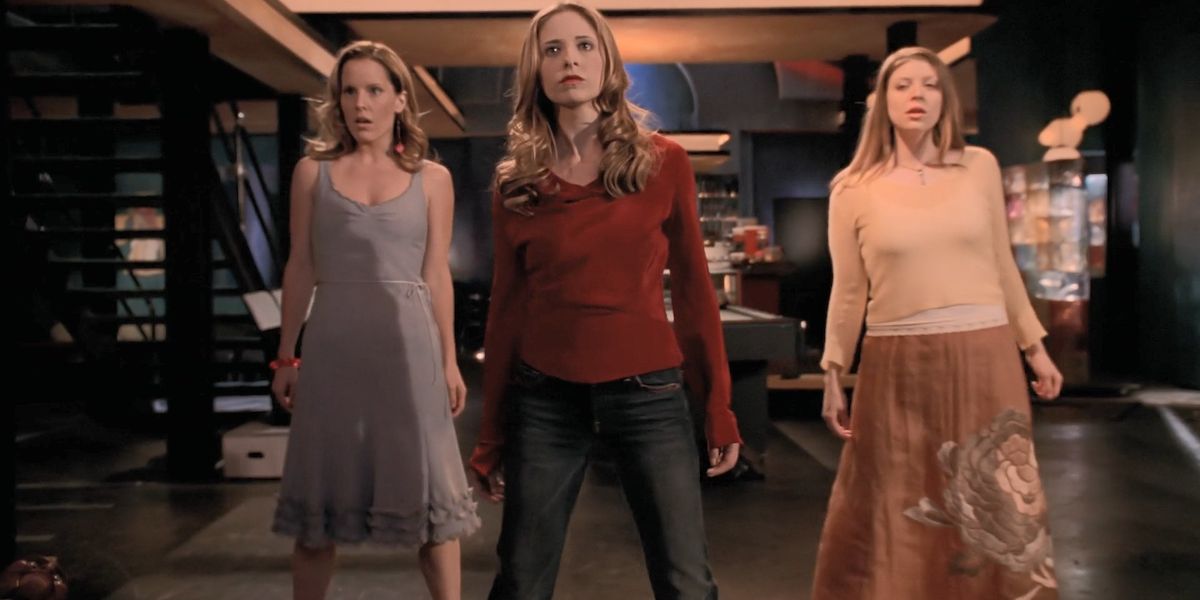The Big Picture
- “Once More, With Feeling” is the gold standard for musical episodes because the Buffy the Vampire Slayer writers understood that musical numbers reveal true feelings.
- Buffy the Vampire Slayer expertly explores character motivations and relationships through its musical demon plot device.
- “Once More, With Feeling” uses musical tropes flawlessly, with catchy original songs performed by a talented cast, making it the most important episode of the season.
From avid television fans to casual watchers, most viewers are familiar with the concept of the musical episode. While it may seem like an unusual choice, musical episodes have become a rite of passage for many popular TV shows, including The Simpsons, Community, and just about any CW series that lasts for a couple of seasons. Musical episodes existed prior to Buffy the Vampire Slayer’s take on it, but Season 6, Episode 7, “Once More, With Feeling” arguably popularized the concept into trope status— and for good reason.
Musical episodes that have followed in its footsteps have mistakenly attributed its effectiveness to its catchy original songs, which is an understandable misconception. After all, the episode’s soundtrack charted 49 on the Billboard 200 in the US and received stellar reviews from critics. Although its excellent musical numbers certainly contribute to what makes the episode great, the real reason “Once More, With Feeling” is the gold standard for musical episodes is because the writers understood that musical numbers as a medium function as monologues that reveal a character’s true feelings.
“Once More, With Feeling” expertly sets up Season 6’s progression. The episode dives into character motivations and the group’s interpersonal relationships by having a musical demon force the people of Sunnydale to sing about their current situations. In this season, Buffy, played by Sarah Michelle Gellar, is dealing with depression caused by her expulsion from a peaceful afterlife, which she laments in the episode’s opening number, “Going Through the Motions.” In the Season 5 finale, Buffy sacrificed her life to save the world. Originally, the franchise was supposed to end with her death in Season 5, but the series was renewed for two more seasons. Naturally, Buffy the Vampire Slayer wouldn’t be the same without its titular heroine, so Buffy was revived by her friends at the beginning of Season 6.

Buffy The Vampire Slayer
A young woman, destined to slay vampires, demons and other infernal creatures, deals with her life fighting evil, with the help of her friends.
- Release Date
- March 10, 1997
- Cast
- Sarah Michelle Gellar, Alyson Hannigan, Nicholas Brendon, Michelle Trachtenberg, Emma Caulfield, James Marsters
- Main Genre
- Action
- Genres
- Action, Adventure, Comedy, Drama, Mystery, Sci-Fi
- Rating
- TV-14
- Seasons
- 7
- Creator
- Joss Whedon
- Production Company
- Mutant Enemy, Kuzui Enterprises, Sandollar Television
- Network
- The WB, UPN
Exploring Feelings Through Song Is a Brilliant Choice for ‘Buffy the Vampire Slayer’
Although Buffy’s revival was necessary for the series, her traumatic sacrifice couldn’t be cheapened by having it not affect her entirely, so using this episode’s musical monster to dig deeper into her feelings surrounding her return from the dead was a brilliant choice. While this could’ve been accomplished in a “show don’t tell” fashion, this additional insight into her character came at a breaking point in the pacing of the season. Buffy’s out-of-character moods and actions had been gradually escalating in previous episodes, but couldn’t be the primary focus of the show because, at its core, Buffy is a “monster of the week” style dramedy. Sacrificing Buffy‘s campy tone and premise would have been counterintuitive because the show is beloved for those reasons.
With the help of a few comedic songs breaking the tension of dramatic songs, the episode felt right at home in the Buffy universe. So did the supernatural premise of the episode, which not only made more sense than other TV shows’ convoluted reasoning for musical episodes but also came at a perfect time in the storyline for the rest of the characters. Often, musical episodes revolve around the issues of one character— typically the main character who bumped their head or went on a drug trip or whatever reason is given to explain why everyone is singing and dancing in perfect unison. While that can work, the spirit of a musical is to explore each of the characters, not just the protagonist.
‘Buffy the Vampire Slayer’s Characters Gain Nuance Through Song in “Once More, With Feeling”
In the episode, each of the characters gains a new level of nuance either through a solo or a duet. The audience learns something new about their relationships, insecurities, or future plans. It would feel unnatural— and not to mention boring— for this information to be uncovered by the characters suddenly deciding to be uncharacteristically vulnerable or by the writers randomly tossing a group therapy session in the show. By sticking to both the spirit of the franchise and the spirit of musicals, “Once More, With Feeling” masters the concept in a way few other franchises have managed to follow.
In addition to revealing information to the audience, “Once More, With Feeling” employs the “in-world” vs “out-of-world” musical tactic to reveal secrets to the other characters. Out-of-world songs are played directly to the audience, unheard by the other characters. In-world songs are the opposite. Buffy, Spike (James Marsters), Xander (Nicholas Brendon), and Anya (Emma Caulfield Ford) are all forced to participate in in-world songs that cause them to say things they want to keep private — like Buffy revealing she doesn’t want to come back to life to her guilt-stricken friends. The secrets revealed in this episode directly progress the season’s storylines, which makes “Once More, With Feeling” more than a one-off character study. In fact, it’s the most important episode of Season 6. There’s nothing wrong with fun musical episodes that add little importance to the overall plot, but they are arguably missed opportunities because musicals provide unique storytelling techniques worth utilizing.
“Once More, With Feeling” Uses Musical Tropes Flawlessly in ‘Buffy the Vampire Slayer’
Musicals also provide stylistic techniques that “Once More, With Feeling” used flawlessly. From the overture leading into the opening number to the group dance number and harmonies celebrating the dry cleaner, the creative team behind the episode knows musical episodes should be more than some vaguely relevant jukebox songs performed by actors who are unsure how to emote while singing. The cast really leans into the task, which makes the episode all the more enjoyable to watch. The musical demon himself, played by Hinton Battle, is the cherry on top, providing viewers with smooth vocals fit for a suave and memorable villain. It’s clear the episode is a joint effort with the cast and crew both ensuring the musical episode trope was done justice.
Overall, Buffy the Vampire Slayer’s version of the musical episode reigns supreme because it does everything a musical is supposed to do, and it does it exceedingly well. Pulling off a musical episode of this caliber is no small feat, but those who want to follow suit need to look no further than “Once More, With Feeling.”
Buffy the Vampire Slayer is available to stream on Hulu in the U.S.
Stay connected with us on social media platform for instant update click here to join our Twitter, & Facebook
We are now on Telegram. Click here to join our channel (@TechiUpdate) and stay updated with the latest Technology headlines.
For all the latest TV News Click Here


